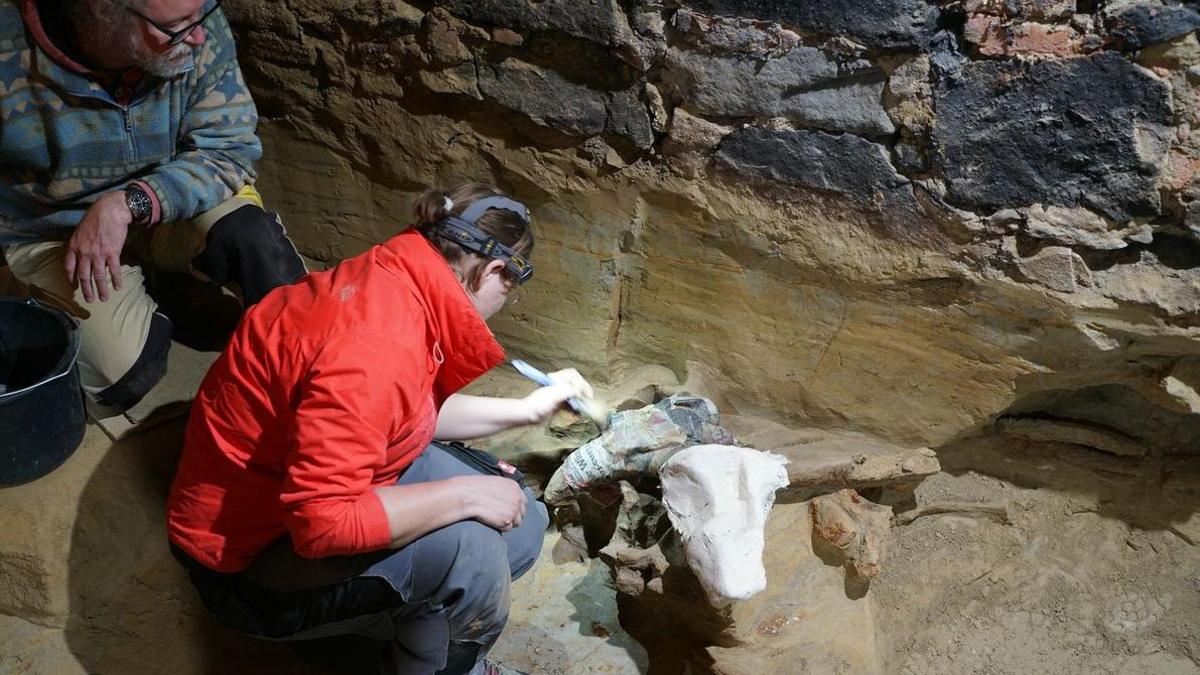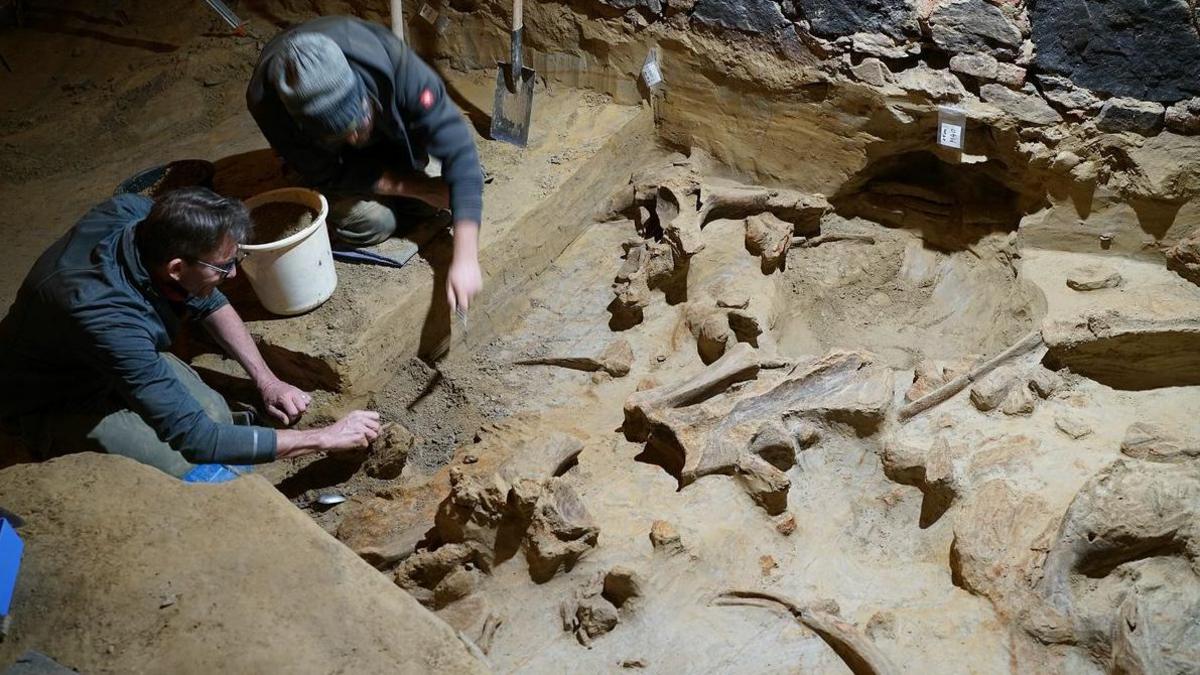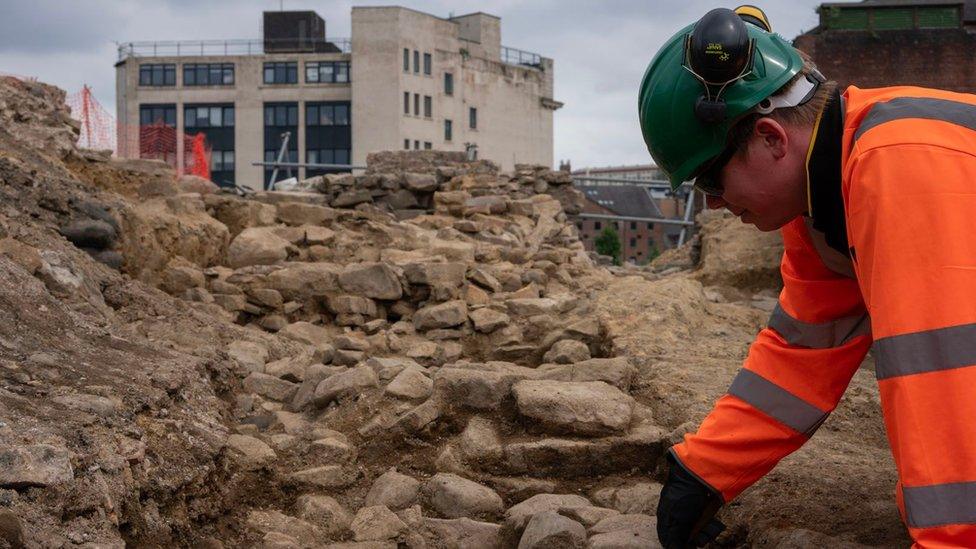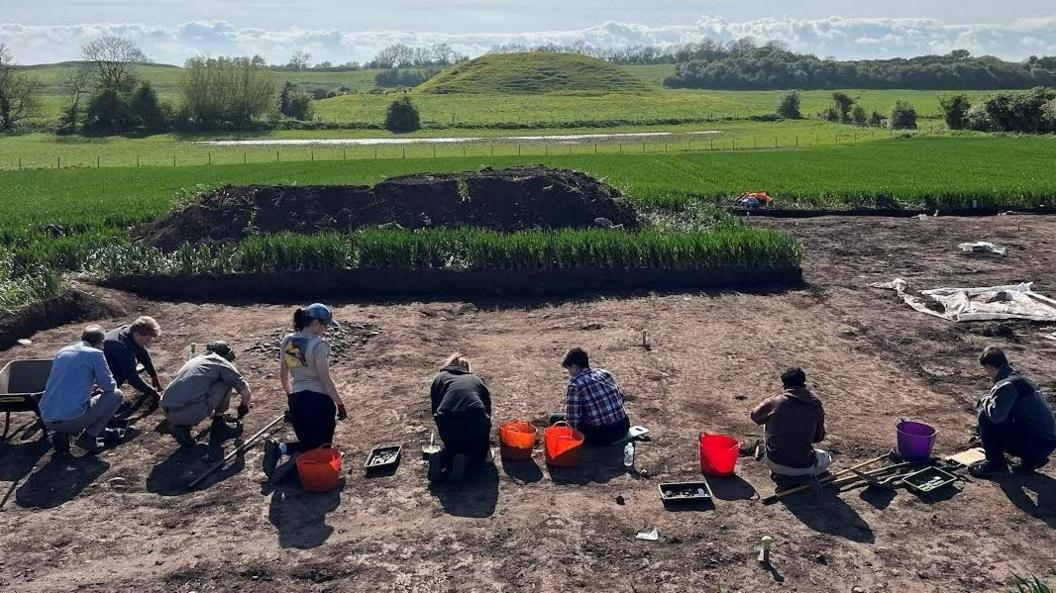Austrian man discovers mammoth bones in wine cellar

- Published
A man who was renovating his wine cellar in Austria has made an extraordinary discovery. It wasn't a vintage red or white - but the remains of prehistoric mammoths.
The find has been called an "archaeological sensation” by researchers from the Austrian Archaeological Institute of the Austrian Academy of Sciences, the OeAW.
The winemaker, Andreas Pernerstorfer, came across a number of huge bones, buried deep in his wine cellar in the village of Gobelsburg, in the district of Krems, west of Vienna.
He reported his find to the authorities, who identified them as the bones of at least three Stone Age mammoths.
Mr Pernerstorfer told the Austrian Broadcasting Corporation, ORF, that he was renovating his wine cellar when he made the discovery.
“I thought it was just a piece of wood left by my grandfather. But then I dug it out a bit and then I remembered that in the past my grandfather said he had found teeth. And then I immediately thought it was a mammoth," he said.
Researchers from the Austrian Archaeological Institute have been excavating the bones since the middle of May.
Archaeologists Thomas Einwögerer and Hannah Parow-Souchon say that stone artefacts and charcoal found at the site indicate that the bones are between 30,000 and 40,000 years old.

The Institute says the last time there was a comparable discovery was 150 years ago, also in the district of Krems.
“During the excavation there, the cellars in question were completely cleared out. Other comparable sites in Austria and neighbouring countries were mostly excavated at least 100 years ago and have largely been lost to modern research,” it said in a statement.
Ms Parow-Souchon said it was the first time they’d been able to investigate such a find in Austria “using modern methods".
Researchers say the discovery raises questions about how Stone Age people hunted mammoths.
"We know that humans hunted mammoths, but we still know very little about how they did it," Ms Parow-Souchon said.
They believe the mammoths could have died on the spot where the bones were found - chased there by humans who may have set a trap for them.
Once they are excavated, the bones will be taken to the Vienna Museum of Natural History.
Related topics
- Published22 May 2024

- Published21 May 2024

- Published19 May 2024
